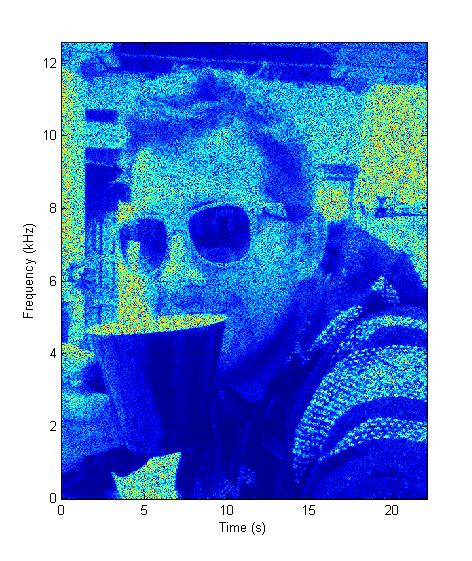(Most of the relevant papers can be downloaded from the publications section)
Near-End Speech Enhancement Based on a Perceptual Distortion Measure – [download]
This algorithm aims for intelligibility improvement of speech in noise for the near-end listener without modifying the global SNR. Here, the common assumption is that a clean speech signal is available and that the noise statistics are known. This is accomplished by optimally redistributing the speech energy over time and frequency for a perceptual distortion measure, which is based on a spectro-temporal auditory model.
Relevant papers
- C. H. Taal, R. C. Hendriks and R. Heusdens, “Speech Energy Redistribution for Intelligibility Improvement in Noise Based on a Perceptual Distortion Measure (In Press)”, Computer Speech & Language, 2014
- C. H. Taal, R. C. Hendriks and R. Heusdens, “A Speech Preprocessing Strategy For Intelligibility Improvement In Noise Based On A Perceptual Distortion Measure”, IEEE Int. Conf. Acoust., Speech, Signal Processing, Kyoto, Japan, 2012
SII-Based Near-End Listening Enhancement – [download]
This algorithm aims for intelligibility improvement of speech in noise for the near-end listener without modifying the global SNR. Here, the common assumption is that a clean speech signal is available and that the noise statistics are known. The method is based on a linear-time invariant filter, which optimizes the speech intelligibility index (SII) under a power constraint.
Relevant papers
- C.H. Taal and J. Jensen, “SII-based Speech Preprocessing for Intelligibility Improvement in Noise”, Proc.Interspeech, Lyon, France, 2013.
- C.H. Taal, J. Jensen and A, Leijon, “On Optimal Linear Filtering of Speech for Near-End Listening Enhancement”, Signal Processing Letters 20 (3), 225-228, 2013.
STOI-Optimal N-of-M Channel Selection for Cochlear Implants – [download]
This Matlab code contains a sinusoidal vocoder to simulate cochlear-implant speech with normal-hearing listeners. The underlying CI speech-processor is based on the N-of-M principle, where the N most significant channels and amplitudes are selected out of the M (22 in this case) available channels. The selection procedure is mathematically optimized for the STOI-measure (see below) based on the matching pursuit algorithm.
Relevant papers
- C. H. Taal, R. C. Hendriks and R. Heusdens, “Matching Pursuit for Channel Selection in Cochlear Implants Based on an Intelligibility Metric”, European Signal Processing Conference, Bucharest, Romania, 2012.
STOI – Short-Time Objective Intelligibility Measure – [download]
Intelligibility measure which is highly correlated with the intelligibility of degraded speech signals, e.g., due to additive noise, single/multi-channel noise reduction, binary masking and vocoded speech as in CI simulations. The STOI-measure is intrusive, i.e., a function of the clean and degraded speech signals. STOI may be a good alternative to the speech intelligibility index (SII) or the speech transmission index (STI), when you are interested in the effect of nonlinear processing to noisy speech, e.g., noise reduction, binary masking algorithms, on speech intelligibility.
Relevant papers
- C. H. Taal, R. C. Hendriks, R. Heusdens, and J. Jensen, “A Short-Time Objective Intelligibility Measure for Time-Frequency Weighted Noisy Speech”, IEEE Int. Conf. Acoust., Speech, Signal Processing, Dallas, United States, pp. 4214-4217, 2010.
- C. H. Taal, R. C. Hendriks, R. Heusdens, and J. Jensen, “An Algorithm for Intelligibility Prediction of Time-Frequency Weighted Noisy Speech”, IEEE Trans. Audio Speech Lang. Process., vol. 19, pp. 2125-2136, 2011.

